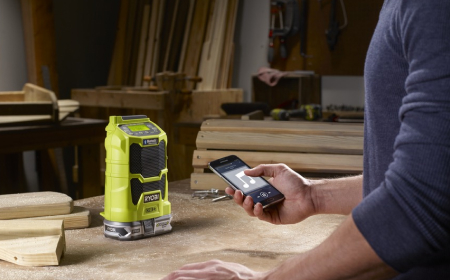If you are a customer from AUSTRALIA or NEW ZEALAND and have tried resetting your MYRYOBI password but didn't receive a 'Reset Password' email, follow these troubleshooting steps:
| Cause |
Solution |
| Email Address Verification |
- Check you entered the correct email for your MyRYOBI account and country/site (Australia or New Zealand).
- If you don’t have MyRYOBI account with us in Australia or New Zealand, contact the local RYOBI supplier in your region.
- Ensure you eliminate any spaces within and at the end of the email address.
- Double check for any typos or errors in your email address.
|
| 'Reset Password' email in spam folder |
- Sometimes, password reset emails may be filtered into your spam, junk, or promotions folder.
- Please check these folders to see if the reset email has been mistakenly redirected
- To avoid future issues, add MY RYOBI communication emails to your email contacts or safe sender list to ensure emails reach your inbox.
|
| Email server issues |
- Your email server may be experiencing temporary technical issues, causing emails to be delayed or not delivered.
- Try refreshing your email inbox after a few hours to see if the password reset email appears.
- If the 'Reset Password' email still hasn't appeared after a day, try requesting a password reset again.
|
|
Cached data issues
|
Cached data might interfere with new data being generated by a password reset request, causing the process to fail or behave unexpectedly.
Follow the instructions for your browser below. When you get to the last step, after clearing the cache, close all tabs and restart your browser before attempting the password reset process again.
Google Chrome:
- Open Chrome and click on the three vertical dots in the top-right corner.
- Navigate to Settings.
- Scroll down and click Privacy and security.
- Choose Clear browsing data.
- In the pop-up, select the Cached images and files checkbox.
- Click Clear data.
Mozilla Firefox:
- Open Firefox and click the hamburger icon (three horizontal lines) in the top-right corner.
- Click Settings.
- Navigate to Privacy & Security on the left pane.
- Scroll down to Cookies and Site Data.
- Click Clear Data and select Cached Web Content.
- Confirm with Clear.
Safari:
- Open Safari and go to Safari menu.
- Choose Preferences.
- Navigate to the Advanced tab.
- Enable Show Develop menu in menu bar.
- From the Develop menu, choose Empty Caches.
Microsoft Edge:
- Open Edge and click on the three horizontal dots in the top-right corner.
- Select Settings.
- Go to Privacy, Search, and Services.
- Scroll down and click Choose what to clear under Clear browsing data.
- Choose Time Range.
- Tick options Cached data and files and click Clear.
Internet Explorer:
- Open Internet Explorer and click on the gear icon in the upper-right corner.
- Select Internet options.
- Under Browsing history, click Delete.
- Check Temporary Internet files and website files and click Delete.
|
| Contact Customer Support |
If you still haven’t received the reset email after following these steps, please contact our customer support team for assistance on
0508 MY RYOBI (0508 697 9624) between 8am-5pm NZST Monday - Friday
|





